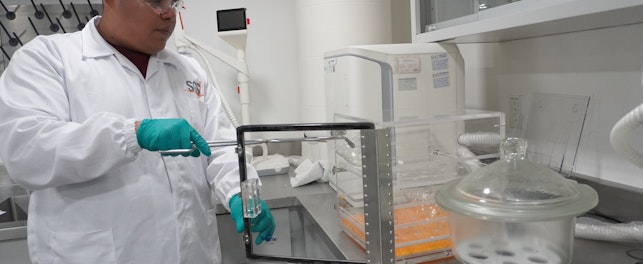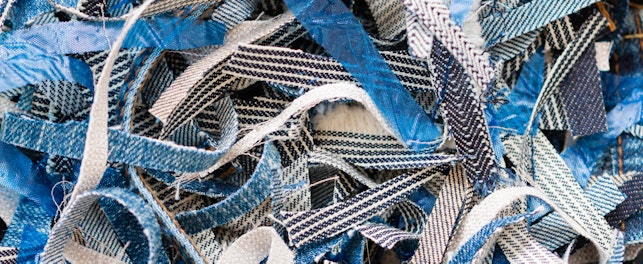Consumers are increasingly choosing fashion with purpose. As awareness grows around the environmental and social impact of clothing, ethical fashion is emerging as a preferred choice. But what does it mean, and how can shoppers make sustainable choices?
Not all fashion is manufactured ethically. In many supply chains, speed and cost are prioritized, transforming the way people buy and wear clothing. However, by making clothing more accessible, this approach has also made clothing more disposable. Many items of clothing are now only worn between seven and ten times in developed countries before being discarded – a decline of over 35% in just 15 years.1
Recent reports into the textile market have also exposed dangerous levels of toxic chemicals in mass-produced clothing, highlighting risks to workers, consumers and ecosystems.2 In addition, with between 80 and 100 billion garments being produced globally each year, it is estimated that 87% of the materials and fibers will end up in landfills or be incinerated.3 This is a huge environmental problem that undermines the move towards a more circular economy.
Brands looking to move towards more sustainable production need to be aware of the challenges presented by this supply chain model:
- Worker exploitation – unfair treatment and unsafe conditions for workers
- Toxic chemicals – harmful dyes and finishes that impact workers and consumers
- Resource-heavy production – excessive use of water, energy and synthetic chemicals accelerates environmental damage
- Short product lifespan – low-quality materials lead to garments that wear out quickly, generating waste and pollution
However, change is on the horizon. Consumers are now better informed, regulators are tightening environmental standards and progressive brands are rethinking their business models. Adopting an ethical approach is increasingly seen as essential to long-term success.
What is ethical fashion?
At its core, ethical fashion means designing, making and distributing clothing in a way that respects both people and the planet. It goes beyond style, and is rooted in fairness, sustainability and accountability across the entire supply chain.
Ethical fashion supports:
- Fair labor practices – ensuring that workers throughout the supply chain are treated with dignity, paid fairly and work in safe conditions
- Sustainable innovation – investing in cleaner, more efficient production methods that reduce environmental impact, conserve resources and cut emissions
- Material responsibility – prioritizing both natural and synthetic materials that are safer, longer-lasting and less harmful
This approach challenges the fast, low-cost model by promoting durability, thoughtful consumption and radical transparency. It encourages both consumers and brands to consider where and how their clothing is made, and by whom.
Without transparency, trust in ethical claims can quickly unravel. For fashion to truly be ethical, it must provide visibility into the sourcing of materials, labor conditions and environmental impact. Only then can consumers make informed choices and hold brands accountable.
Key principles of ethical fashion
Ethical fashion is guided by core principles that promote environmental sustainability, social responsibility and transparent practices across the life cycle of a garment.
- Safer, more sustainable materials
Ethical fashion focuses on minimizing the use of harmful chemicals while enhancing the performance and durability of textiles. Brands are improving material sourcing by adopting recycled fibers (e.g. recycled polyester or nylon) to reduce dependence on virgin resources. They are also phasing out toxic substances, such as per- and polyfluoroalkyl substances (PFAS) and phthalates, from the supply chain. - Responsible manufacturing and chemical management
Clean manufacturing protects both workers’ health and the environment. To achieve this, manufacturers must optimize chemical use and eliminate hazardous substances, particularly carcinogenic, mutagenic and reprotoxic (CMR) chemicals, from the value chain. They should also minimize water and energy consumption through more efficient dyeing and finishing processes. - Transparency and supply chain accountability
Consumers increasingly demand insight into the origins of their clothing. In response, brands are improving supply chain tracking and using digital records to back ethical and environmental claims. Third-party verification helps prevent greenwashing by ensuring claims are substantiated with scientific data.
Transparency is no longer optional. Regulatory pressures, such as the EU’s Digital Product Passport, are making traceability a legal requirement. Tools like QR and RFID codes embedded in the clothing are becoming standard, enabling full product tracking – from raw materials to end user.
As awareness of fashion’s social and environmental impact grows, consumers are turning toward ethical choices. In response, brands must adopt effective, transparent solutions to build supply chains that are both ethical and sustainable.
bluesign solutions
bluesign, an SGS company, has led the clean chemistry movement for nearly 25 years. We help brands eliminate hazardous substances, optimize resource use and ensure textiles are safe for both workers and consumers.
By collaborating with over 800 system partners, including chemical suppliers, textile manufacturers and global brands, we set new benchmarks for safer, more responsible fashion. Our services empower brands with actionable solutions for better chemical management, circularity and digital transparency.
System partners are required to follow strict environmental and safety criteria. Consumers looking for trusted, ethical fashion can therefore rely on products carrying the bluesign logo.
Explore bluesign-certified ethical fashion brands.
Enjoyed this article?
Find more news and updates in our Consumer Compact newsletter >
Delivered direct to your inbox
Subscribe to Consumer Compact >
References
1Putting the brakes on fast fashion (UNEP)
2Your Clothes Could Be Toxic. Fashion Urgently Needs To Address This (British Vogue)
© SGS Société Générale de Surveillance SA.
16th Floor, Block A, No.73 Fucheng Road, Century Yuhui Mansion,
Beijing, Haidian District,
China





